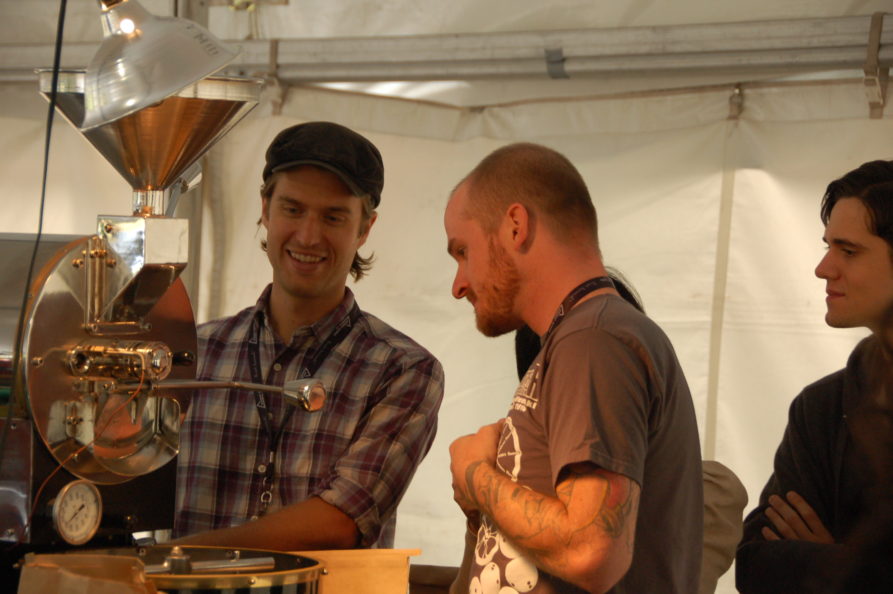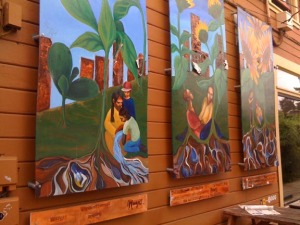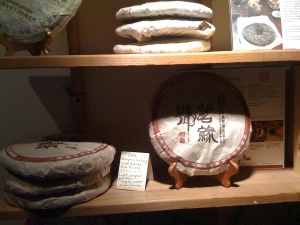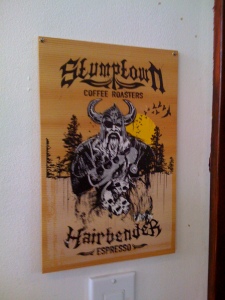Our Blog

Roasters Guild Retreat August 2010 – by Andrew Owen Phillips, roaster for Kean Coffee
Freshness means something. Most of us do not realize that some things need a little time to rest even after much of their dynamic process has finished in order to fully appreciate all that is inherently there. In coffee, it’s called the “gassing out” period where coffee, once it’s roasted, is allowed at least 24 hours before it is cupped (aka evaluated). The theory goes that if you taste it too soon, you are tasting CO2 gasses and other volatiles that are the byproducts of roasting and not necessarily what’s in the bean. Things need a little time. So it was with me after this year’s Roaster’s Guild Retreat up in Stevenson, Washington. I needed some time to let all the crazy and dynamic energy that fed into me for three days have a chance to coalesce into something tangible (and hopefully understandable).
Every year, the Specialty Coffee Association of America puts on a retreat for people connected to the profession of roasting coffee as a place to network with other professionals, learn from industry leaders, and have a good time while doing it. It’s called the Roaster’s Guild Retreat. This year it was at Skamania Lodge in Stevenson Washington. As a participant, you are assigned a team of other professionals and with this team you compete in competitions, attend classes, and have many of your meals together. It’s a nice touch to have teams on this kind of retreat, especially if you are attending without your usual social buoy system. An added benefit is that they mix up the teams with some sense of deliberateness and you find coffee folks from all sides of the spectrum. On my team was a coffee grower from Guatemala, a coffee importer, an espresso machine designer, a Q-grader, and roasters from all levels.
It was my first year going and I had packed a healthy dose of apprehension along with my carry-on as I traveled alone to this place representing Kean Coffee. This was a chance for me to touch base with my peers in the business, get a sense for where my skills were at, and where the collective “thought” of roasting is headed. Good thing I had my Kia rental car.

After a brief embarrassing bout of being star struck in front of Josh Holloway, I was on my way out of the airport. On my way in I stopped at a few coffee and tea shops in the Portland area. Stop one was Albina Press- a killer coffee shop in the very hip North Portland neighborhood (but really, are there many places that are not hip in Portland??) where I met Rita, a very knowledgeable staffer/barista who seemed to know everyone in the business.
After a near-perfect traditional cappuccino, Rita helped revise my list of places to visit down to the few that I had time for- including a lunch with the best biscuits in town.
Stop #2 was a delightfully small roaster/retailer called Sterling where I was treated to a single-origin Yergecheffe espresso. Great people that seemed very down-to-earth. They roast some of their coffees on a sample roaster made by San Franciscan.
Stop #3 was Tao of Tea. “What, tea? Tea, you say?” Yes, tea I say! This is a must see for anyone traveling through the area. Beautiful shop, and the tea expertise here astounding. Tao of Tea also happens to be our tea supplier for Kean Coffee. I was treated to some chai with the owner who gave me the most extensive lesson on tea that I have ever had. Have you ever smelled Holy Basil?
Stop#4 was Stumptown off of Belmont. I did not have time to go their annex next door for a coffee cupping, but you cannot go through Portland without stopping by this Pacific Northwest icon. Stripped down, artsy atmosphere with a nod to the “artisan way” of coffee, Stumptown continues to make their mark on the coffee scene across the States.
Onward and upward, let’s talk about the retreat. I arrived at the beautiful lodge fully caffeinated and ready to go, I grabbed my SWAG bag (Something We All Get), checked in to my room, and got ready for whatever was coming my way. As said before, we were broken into teams. I met my team the next morning, we talked, and began to taste the coffees that were available for this year’s competition. Every retreat there is some sort of roasting challenge and this year it was to take up to six different coffees from different growing regions in Guatemala, roast them according to your team’s collective wisdom, and then blend them together to create the best tasting single-origin blend.
One of the more fascinating sessions I was able to be apart of was Ric Rhinehart’s roundtable discussion about the future of specialty coffee. Specialty coffee represents a distinct portion of the world-wide coffee trade. Only a small portion of all the coffee in the world is considered “specialty” grade. Not only does it have to be free from most defects considered common in other, lower grades of coffee, but also it has to have positive, pleasing qualities based on it’s growing origin. The trouble with coffee right now is that supply and demand are completely in-step with each other. The troubling part is that demand is on the rise, and supply is on the decline. It is a lot more viable for landowners to grow condominiums than to grow coffee plants. The specialty market is beginning to polarize towards higher quality and higher cost on one side, and lower quality and lower cost on the other. Typically specialty coffee has enjoyed a pliable middle ground between the two where consumers could get very high quality coffee for a very low price. This is increasingly rare and it is becoming more difficult to source high quality beans. Martin himself has stated that he has probably spent twice as much time sourcing coffee this year as he has in previous years. There are a lot of factors involved in all of this but whether you are free-trade, fair-trade, direct-trade, or just a plain traitor, it is a subject that speaks to lasting changes coming down the specialty coffee market.
Back to the blending. Our team placed in the top five in the blending competition. For those that think this is not a big deal, all I’m going to say is that the judges are the people who have collectively cupped thousands of coffees throughout the world- many of whom do this for a living! Booya. While it would have been great to take the top spot and donate a Probatino to a coffee charity of our choice, I was more than happy to place where we did and we had a great time while doing it.





